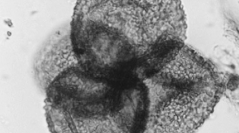

 Comptes Rendus Palevol
6 (1-2) - Pages 157-168
Comptes Rendus Palevol
6 (1-2) - Pages 157-168The Upper Miocene basin of La Cerdaña (eastern Pyrenees, Spain) is characterised by siliciclastic sedimentation in alluvial, fluvial, deltaic, and lacustrine depositional settings. The lacustrine deposits in the southwestern part of the basin show intercalations of levels rich in organic matter linked to plant accumulations. The differential accumulation of miospores in this part of the basin is due to the intrinsic features of the miospores themselves and of their producers, and extrinsic factors such as the palaeoecology of the miospore producers and the characteristics of the depositional setting. The features of the miospore assemblages and the factors that produced their accumulation are analysed. The proportions of the different miospores in the studied assemblages showed that their accumulation occurred differently in the various lake sediments; this agrees well with a NE–SW running Neves effect. This latter effect is mainly a result of the type of transport the miospores underwent, which was influenced by the vegetation and climate, the structure of the lake, and other phenomena such as fires. The sediments from swampy areas were characterised by high percentages of local and extra-local miospores of parautochthonous and allochthonous nature, whereas those from deepwater areas showed mainly extra-local and regional miospores. The means by which the miospores were preserved in the different lithologies of the La Cerdaña basin are analysed.
Palynology, taphonomy, Thanatocoenosis, Neves Effect, Upper Miocene, La Cerdaña basin, Spain